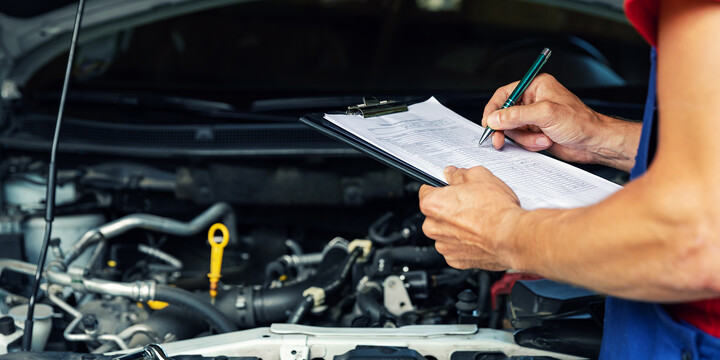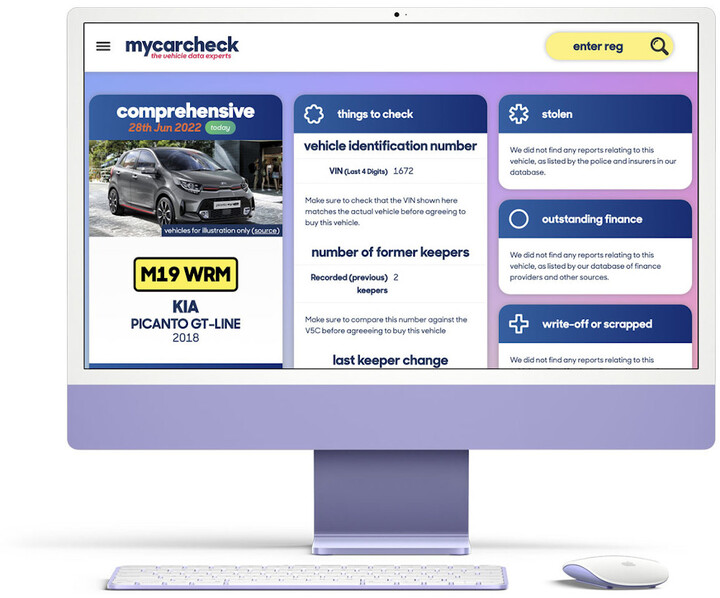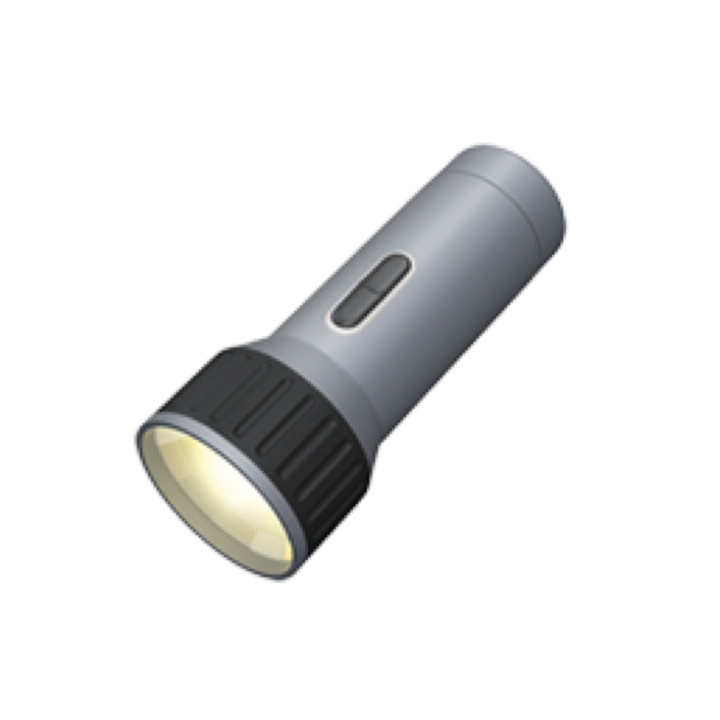
car inspection
FREE Car History Check
See MOT history, valuations, detailed specs and more… AND upgrade to see if any vehicle has been stolen, has finance or has been written off from just £4.99
A car should be test driven and inspected before purchase. This is very important when buying a used car from a private seller.
Test Driving the Vehicle
As well as looking for potential faults on a vehicle, part of the car buying process is to understand if a vehicle is right for you. So whether you are considering a brand new or used model, we can’t recommend a test drive strongly enough. Ideally, you should aim for at least an hour but if you can arrange a longer drive - some garages will allow this with new cars - it will help you perform a fuller evaluation.
Is the car right for you?
Even if you have driven a particular make and model of car before it is still important to take a road test. During a model’s life - and across the trim levels - many things differ, from engines to the shapes of the seats. So for a new car, aim to test the exact model you intend to order. For a used car, test the vehicle you intend to buy.
Start with the basics. Can you climb in and out easily? Take time to get comfortable. Does the seat adjust sufficiently for you? Can you operate the controls as you should? Try everything out. Is the clutch too heavy or the hand brake lever awkward for example?
Does the car have a sporty specification with firm suspension? Large wheels and low profile tyres tend to look good but on the move but can impact ride quality. Does it glide over speed bumps or shake every bone in your body? If you live at the end of a bumpy track, check the car has sufficient ground clearance.
Technology is considerable in cars and there are new features appearing all the time. Try it all out and don’t be shy in asking for help with any complicated features or menu systems.
Does the car feel suitably powered for your needs? If it is sluggish with just the driver in, how will it deal with a large family or pulling a caravan?
Bring a friend. While a dealer may insist on accompanying you (and be chatting to you about just how fabulous the car is) a friend can listen out for strange noises and ask further questions.
In summary, try to think of how you use the car. If you need a child seat for your family, take one and try to fit it. If you commute on motorways, aim to drive on a motorway. Any good salesperson will understand this and aim to facilitate a proper test drive.
Is the particular car right?
You are happy with the make and model but when considering a used car, what can you tell during a test drive which will help determine if there is anything wrong with the car.
Aim to start with a cold engine so you can be sure it operates as it should when it warms up. If available, check the car’s average fuel consumption figure to see how thirsty it has been. Then reset it and check again at the end of your drive. Does it differ wildly from the previous figure? Is it what you’d expect from this type of vehicle?
Take the car on a variety of road types and surfaces; drive about town and on dual carriageways or motorways. And ensure you drive around varied corners to check the steering and uneven roads to check the suspension. Check all the controls operate as they should and listen for squeaks, rattles, knocks or anything else which could indicate problems.
Why you should check the fuel cap
The fuel filler cap should be the correct one for the car and must form a good seal. It is always worth unscrewing the cap and checking that the rubber O-ring is in good condition and that it forms a proper seal to keep dirt out of the filler neck. Check too that the locking mechanism works. This might require a key to unscrew the filler cap or a flap which is locked along with the car doors.
Why you should check the Car Oil and Fluids
The oil in the engine is there to lubricate, not to burn. So checking the fluids levels before buying the car will show you how well the engine has been maintained.
Within your car is a whole host of different fluids, each with a critical job. Many new cars have sensors to detect low levels or pressures, but it is important to check not only the levels but also signs of leaks when looking over a used car.
Ideally you will be able to see where the car is regularly parked if you are buying privately or where it has been sitting for a while if at a dealership. So, look on the ground for any obvious signs of leaks. While it isn’t uncommon for an older engine to have a slight oil drip, modern engines really should be oil-tight. There shouldn’t be any escaping transmission fluid, brake fluid, clutch fluid, power steering fluid or coolant either.
After checking directly beneath the engine, if it is a rear wheel drive car or 4x4, look along the length of the car to check there are no leaks from the gearbox and rear differential (and transfer box if it is a 4x4).
While peering beneath the car, check the brake hoses, callipers, drums and backs of the wheels for signs of any escaping brake fluid. Also check the reservoir. Most are semi-transparent so shouldn’t need the cap removing to see the level. (A gentle rocking of the car is often enough to spot the fluid moving to see how full it is.)
Power steering and clutch both use their own header bottles, often with a small dipstick; carefully remove the cap and check their levels.
A car’s coolant can be checked by looking at the header tank. If it is transparent you can check without removing the cap. If not, you will have to remove the cap to see - but remember to do this only with a cold engine so you aren’t sprayed with hot water.
Some new cars monitor the oil level electronically but most engines still have a dipstick available. The car should be parked on a reasonably level surface and the engine shouldn’t be run for a while before checking (to allow the oil to drain down the engine for a more accurate reading). The dipstick should then be removed, wiped with a clean, lint-free cloth, replaced and removed again to view the level.
When looking at the engine’s dipstick, it is also worth noting the colour of the oil. On a petrol car, it will remain partly translucent for some time after a service. Diesel engines tend to turn their oil black quickly after an oil change.
Cars with automatic gearboxes often have a separate dipstick for this too, so it is worth confirming this also has the right amount of oil in.
Car Clutch Inspection
Check the clutch. Before buying the car, to see if it is engaging and disengaging properly, if not it means the clutch is ready to go and may need changing. The clutch allows disengagement of engine from gearbox and final drive. This is needed in order to change gears, it allows a car to pull away smoothly and is essential for a car to be brought to a halt without stalling. With an automatic gearbox this is done by the car but a manual requires the driver to engage and disengage the clutch by use of a foot pedal.
The clutch is therefore an item which will wear over time and how a car is driven will determine how fast this happens. Sometimes a clutch will last the life of a car but if a car is used on many stop-start runs or a driver regularly slips the clutch - partially engaging it to hold a car on a hill for example instead of using the handbrake - the clutch plate will wear out faster.
You won’t be able to tell how worn a clutch is but you will be able to determine if it is working properly. After checking the clutch fluid level - see our section on oil and fluids - you will need to drive the car.
After engaging first gear, pull away as normal and as you operate the clutch pedal, check for squeaks, vibration through the pedal, grinding noises or a smell of burning. As you accelerate, see if there is any slippage. This is where the engine will speed up but the car doesn’t accelerate (with the car in gear and your foot clear of the clutch pedal).
To further test the clutch, find some space off the public road, and try to pull away in third gear. This will require some slipping of the clutch and if done slowly can be achieved without stalling the engine. You will be able to feel the clutch ‘biting’ for longer and detect any slippage or other unusual behaviour.
Car Exhaust Inspection
When checking the exhaust Look for damage, particularly on the silencers, and at any low points where it is most vulnerable. The exhaust system is key to the proper operation of a car’s engine. It has components to take out some of the pollutants and silencers or ‘boxes’ which help reduce noise. As it runs beneath the car, it is subject to water, flying grit and stones, corrosive road salt in winter and even damage from uneven surfaces. This all means it makes sense to check its condition especially before purchasing a used car.
Check for corrosion, both of the exhaust itself and the brackets and hangers which suspend the pipe along the car. Look for damage, particularly on the silencers, and at any low points where it is most vulnerable.
When checking a car, ask to start the engine from cold. Sometimes there is some condensation - perfectly normal - which comes out as water vapour and it this is handy so you can to look along the length of the exhaust to see if any gas is escaping part way along rather than out of the tail pipe as it should.
The exhaust can also tell you about the state of the engine, especially in petrol cars. A pale brown colour inside the tail pipe indicates a reasonable fuel mix. Black indicates too rich (not enough air mixed with the fuel) and very pale indicates lean running. Diesel engined cars tend to have darker, sootier exhaust pipes although if you spot excess soot around the rear bumper too, it might mean the engine needs some attention.
Do check the dashboard for warning lights relating to emissions which will include the catalytic converter. The car may have a specific light for this or simply illuminate the main engine management system error light - in which case a garage’s diagnostic system will be needed to determine the issue.
Car tyres inspection
Tyres are one of the most important components when it comes to car safety. There are just four points of contact with the road - each just the size of a handprint – to bring your car to a halt and ensure it corners properly. They are high tech items with complex internal structures which can be damaged if not looked after. Yet owners often bump up and down kerbs, begrudge the cost of tyre replacement and continue to drive with worn or damaged tyres.
When evaluating a used vehicle, it is key to check all the tyres, including the spare or space saver if fitted. They will also give hints to the way a car has been looked after. Are they budget tyres on a premium car? If they are worn below the legal limit, what other important maintenance might not have been completed? And of course if they are approaching the minimum tread depth, they will need replacing soon so this can be a useful bargaining point.
Condition
First look at the general condition of the tyres and check for the following.
- Cracking – indicates old and often hardened tyres, affecting both ride and grip
- Deformities – these could mean a fault in manufacture or more likely the tyre has been involved in an impact, perhaps with a pothole or kerb
- Cuts or scuffing – this could lead to failure or hide internal damage
- Damaged wheels – if there is a dent in the wheel rim, it could mean the tyre is damaged internally too, even if there is no visible sign
Tread
Next, check the tread depth of all the tyres. The minimum in the UK is 1.6mm across the middle three quarters of the tyre width. While you can use a tread depth gauge, it is easy to check this visually: the central groove around a tyre will have small markers at various points and these are 1.6mm from the base of the tyre. If they become flush with the rest of the tread, then the tyre is worn to its legal minimum. Note this really is a minimum because the tyre’s grip and ability to expel water deteriorate markedly once a tyre has less than 3mm depth. Our recommendation is to replace tyres before they reach 2mm.
Pressures
Tyre pressures affect the performance of a tyre so it is important all pressures are as per the manufacturer’s guidelines. (These can be found on the back of the fuel filler cap flap, on one of the front door frames or in the handbook.) Pressures should be consistent across each axle (so both front tyres the same as each other, both rear the same). The guides usually show pressures for driving the car when empty or if fully loaded. Front pressures can often differ from rear ones because a car has different weight considerations with the engine usually over the front wheels.
Age
Rubber compounds in tyres deteriorate over time. Usually cars wear tyres out but age can be an issue for older cars doing low mileages. Remember tyres may have been manufactured some time before they were put on the car too. Modern tyres have a date stamp to indicate age: look for the letters ‘DOT’ and a four digit number showing the week and year of manufacture. So DOT 1016 would mean week 10 (i.e. March) in 2016.
Tyres older than 10 years are widely considered unsafe; many manufacturers recommend they are replaced at six years.
Choice
It is important to have the same brand and model of tyre on each axle (and ideally on all four wheels) to ensure consistent performance especially for braking. After that, there is an element of personal choice. The general rule of ‘you get what you pay for’ holds true with tyres and the more expensive ones usually outperform the cheaper brands. You will need to ensure the tyres conform with the specification of the car too: they should be the right size for the wheels and have the correct load and speed rating (see below).
To help buyers compare tyres, new ones must also be sold with information on wet weather performance, noise and fuel efficiency (otherwise known as energy lost or rolling resistance).
What do the tyre specification codes mean?
Irrespective of brand, tyres will have a code which looks like this written on the sidewall: 275/45 R 17 91 W. The first part relates to the tyre’s size, the second to its performance. Here is what the numbers mean in this example.
- 275 is the width in millimetres
- 45 is the height ratio (in this example the height of the tyre wall is 45% of the width)
- R relates to the type of structure (R for radial)
- 17 is the diameter of the wheel in inches
- 91 is the load rating (in this case maps to 615kg for each tyre)
- W is the speed rating (in this case a maximum of 168mph)
Gone are the days when most new cars would come with a full-sized spare wheel. To save cost, weight and interior space, manufacturers have sought alternatives. But what are they and what should you look for when buying a used car?
Spare wheels
If you are fortunate enough to have a car with a full-sized spare wheel, it must be legal and should be correct for the car. If it has a different type of tyre on it to those fitted to the rest of the car’s wheels, it should only be used until the failed tyre can be replaced. See our section on tyres for information about what’s legal and how to check tyres.
The space saver - a smaller get-you-home wheel - is the next best thing. They are usually rated up to 80 km/h (50 mph) and it is important not to exceed this. Because they are smaller, they usually require a higher pressure which needs to be checked. And they must still comply with the minimum legal tread depth of 1.6mm here in the UK.
For either type, the car should have a jack and a wheel brace. Sometimes the brace or a screwdriver doubles-up as a winding handle for the jack.
Run flat tyres
Some cars are fitted with run flat tyres. If the car is designed to have these fitted, it may not have any other form of spare or repair kit. Run flats work by having a firmer side wall so in the event of a puncture, you can continue to drive on the strength of the tyre rather than the air inside it. Should you suffer a puncture, you will be limited to a range of perhaps just 50 miles and will need to keep your speed right down. Unfortunately, all tyre manufacturers have their own codes so the easiest way to determine if the tyres fitted are run flats is to look on the respective tyre manufacturer’s web site.
Tyre repair kits
A tyre repair kit is a bottle of sealant plus a compressor and both should be present. It is worth ensuring the sealant is unused too. If not, you should ask if the faulty tyre is still on the car.
The principle is the same for most kits although you should follow the specific instructions for each particular car. The bottle is attached to the valve and the sealant sprayed inside. Then the compressor, powered from the car’s 12 volt socket, is connected to the valve and the tyre inflated. Sometimes the car needs to be rolled a little to allow the sealant to cover the puncture before the repaired tyre will hold air. If there is a sizeable hole or cut in the tyre, the sealant kit may not work at all. If it is successful, keep your speed below 50mph and replace both the tyre and the sealant can as soon as possible.
Other items
If your car has locking wheel nuts - usually one per wheel - you will need the special key which fits them in order to remove the car’s wheels. If it is not present, make it the seller’s problem: you don’t want to be stranded and unable to fit a spare wheel or have to pay for a garage to remove them.
Some cars - generally premium models - come with items such as a first aid kit, high visibility vest and warning triangle. It is worth checking these are still present when checking a used vehicle. None of these is a legal requirement in the UK but they are in certain parts of Europe and it makes good sense to carry them anyway.














